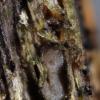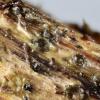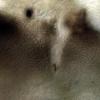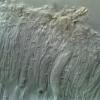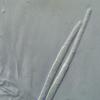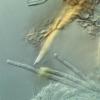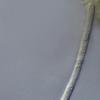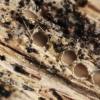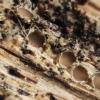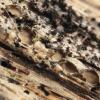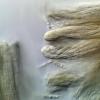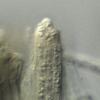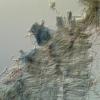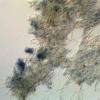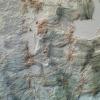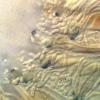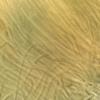
21-01-2026 16:32
Gernot FriebesHi,I need your help with some black dots on a lich

21-01-2026 16:48
Gernot FriebesHi,after my last unknown hyphomycete on this subst

20-01-2026 17:49
 Hardware Tony
Hardware Tony
I offer this collection as a possibility only as e

15-01-2026 15:55
 Lothar Krieglsteiner
Lothar Krieglsteiner
this one is especially interesting for me because

17-01-2026 19:35
Arnold BüschlenHallo, ich suche zu Cosmospora aurantiicola Lite

16-01-2026 00:45
Ethan CrensonHi all, On decorticated hardwood from a New York

18-01-2026 12:24
Hello.An anamorph located on the surface of a thin
Naemacyclus caulium ?
Chris Yeates,
15-09-2017 19:59
 Bonsoir tous
Bonsoir tousfollowing on from a recent find of Karstenia idaei - a first for the county of Yorkshire (which is the area I mainly study), on the same short length of Urtica dioica stem I came across several immersed apothecia which had become more apparent when the already damp stem was wetted further.
The exposed apothecia were pale with dark margins, and varied from circular to oblong, up to 1.3mm across maximum (mostly rather smaller).
The margins were mostly made up of dark brown rather thin-walled isodiametric cells 3.8-5.6µm across.
Paraphyses appeared to be held together at the apothecial surface by a sort of thin gel.
Asci were IKI- and rather scarce in the mature state (presumably a strategy against dessication).
Ascospores were acicular with rounded ends 7-9 septate and 58-65(74.2) x 2.4-3(3.4) µm.
While the spore dimensions are smaller than those give in Dennis's British Ascomycetes and Ellis and Ellis vol.1, I note they are smaller than those of Enrique's collection http://www.ascofrance.com/search_recolte/3256 so I am fairly certain I have Naemacyclus caulium. There is a handful of records of this in the UK - all from Scotland: https://species.nbnatlas.org/species/NHMSYS0001490515; as this would be the first record from England as far I can see I would be grateful for comments from others who may be familiar with the species.
amitiés
Chris
Hans-Otto Baral,
15-09-2017 20:39

Re : Naemacyclus caulium ?
Hi Chris
looks really like Enriques sample. Your third pic shows that the inner side of the lobes is lined by long periphysoids like in Karstenia. Pic 4 needs to be turned (upside down)? You don't have a photo of the ascus apex?
Seems I never saw this.
N. fimbriata totally closes the disc with the lobes during drying. This one also?
I think the asci get more abundant with maturation.
Zotto
looks really like Enriques sample. Your third pic shows that the inner side of the lobes is lined by long periphysoids like in Karstenia. Pic 4 needs to be turned (upside down)? You don't have a photo of the ascus apex?
Seems I never saw this.
N. fimbriata totally closes the disc with the lobes during drying. This one also?
I think the asci get more abundant with maturation.
Zotto
Chris Yeates,
15-09-2017 21:40

Re : Naemacyclus caulium ?
I had put the specimen away to dry for the fungarium, but before trying to revive it I decided to have a look at other Urtica stems collected from exactly the same place at the same time, and kept moist. The result was some splendid material! This really looks like Enrique's collection macroscopically as well. I will do more microscopy tomorrow and will hopefully answer your questions Zotto. Yes the apothecia do seem to close on drying - I shall do some "before and after" shots. The apo at top left has an almost regularly stellate dehiscence.
LG
Chris
LG
Chris
Hans-Otto Baral,
15-09-2017 22:24

Re : Naemacyclus caulium ?
I am not sure if Karstenia closes on drying, I think it does only slightly. You can compare.
Chris Yeates,
16-09-2017 21:23

Re : Naemacyclus caulium ?
Hi Zotto
I have now had the opportunity to study better material from the same collection; the apothecia do not in fact contract much on drying.
Here are images showing the ascal apices which are comparable to those of your HB 6523b (N. fimbriatus), as is the stellate margin often formed by the emergent apo's.
What I was not expecting was the fact that, although the ascus apices showed not IKI reaction, when IKI was added to a fresh, living, portion of hymenium in water (no KOH pre-treatment) there was extensive blueing, as can be seen in these images. I note in another collection - your HB 7361-1 (again N. fimbriatus) - "no parts of hymenium amyloid (in IKI)".
I don't know whether any recent molecular work has been done on Naemacyclus; I see that in 2001 Gernandt et al. (Mycologia v93, pp. 915-32) comment on the uncertain position of the genus, between Helotiales and Rhytismatales. Extensive hymenial blueing such as I have observed here would tend to move away from Rhytismatales.
Chris
I have now had the opportunity to study better material from the same collection; the apothecia do not in fact contract much on drying.
Here are images showing the ascal apices which are comparable to those of your HB 6523b (N. fimbriatus), as is the stellate margin often formed by the emergent apo's.
What I was not expecting was the fact that, although the ascus apices showed not IKI reaction, when IKI was added to a fresh, living, portion of hymenium in water (no KOH pre-treatment) there was extensive blueing, as can be seen in these images. I note in another collection - your HB 7361-1 (again N. fimbriatus) - "no parts of hymenium amyloid (in IKI)".
I don't know whether any recent molecular work has been done on Naemacyclus; I see that in 2001 Gernandt et al. (Mycologia v93, pp. 915-32) comment on the uncertain position of the genus, between Helotiales and Rhytismatales. Extensive hymenial blueing such as I have observed here would tend to move away from Rhytismatales.
Chris
Hans-Otto Baral,
16-09-2017 21:43

Re : Naemacyclus caulium ?
Hmm, and what about Karstenia idaei again? Do you see any striking differences?
Chris Yeates,
16-09-2017 22:28

Re : Naemacyclus caulium ?
That's possible I suppose; the apothecia do look different from the ones in the first post on this thread; though they closely resemble Enrique's . . .
One difference is that the first collection of Karstenia idaei did not show this extensive blueing in IKI, but did show IKI+ apical rings (see pics) absent here.
I see what you mean about highly variable ;-)
Chris
One difference is that the first collection of Karstenia idaei did not show this extensive blueing in IKI, but did show IKI+ apical rings (see pics) absent here.
I see what you mean about highly variable ;-)
Chris
Hans-Otto Baral,
17-09-2017 07:09

Re : Naemacyclus caulium ?
The hemiamyloid reaction of the entire hymenium cannot be absent, it should be there in both samples if they belong to Karstenia. In this second report I see it, though a bit hidden in the lower half of the hymenium by the blueish cast of the photo and perhaps because of DIC. In the firstly reported apos you could test the reaction again, preferably after KOH, then the entire hymenium should react strongly blue.
But I must admit I learned recently about a new Cryptodiscus (muriformis) that this rection rarely may be absent in some of the collections or even vary ing within a population. - never seen this case in Karstenia!
This reaction seems to originate from a relationship to the Lecanoromycetes.
But I must admit I learned recently about a new Cryptodiscus (muriformis) that this rection rarely may be absent in some of the collections or even vary ing within a population. - never seen this case in Karstenia!
This reaction seems to originate from a relationship to the Lecanoromycetes.

